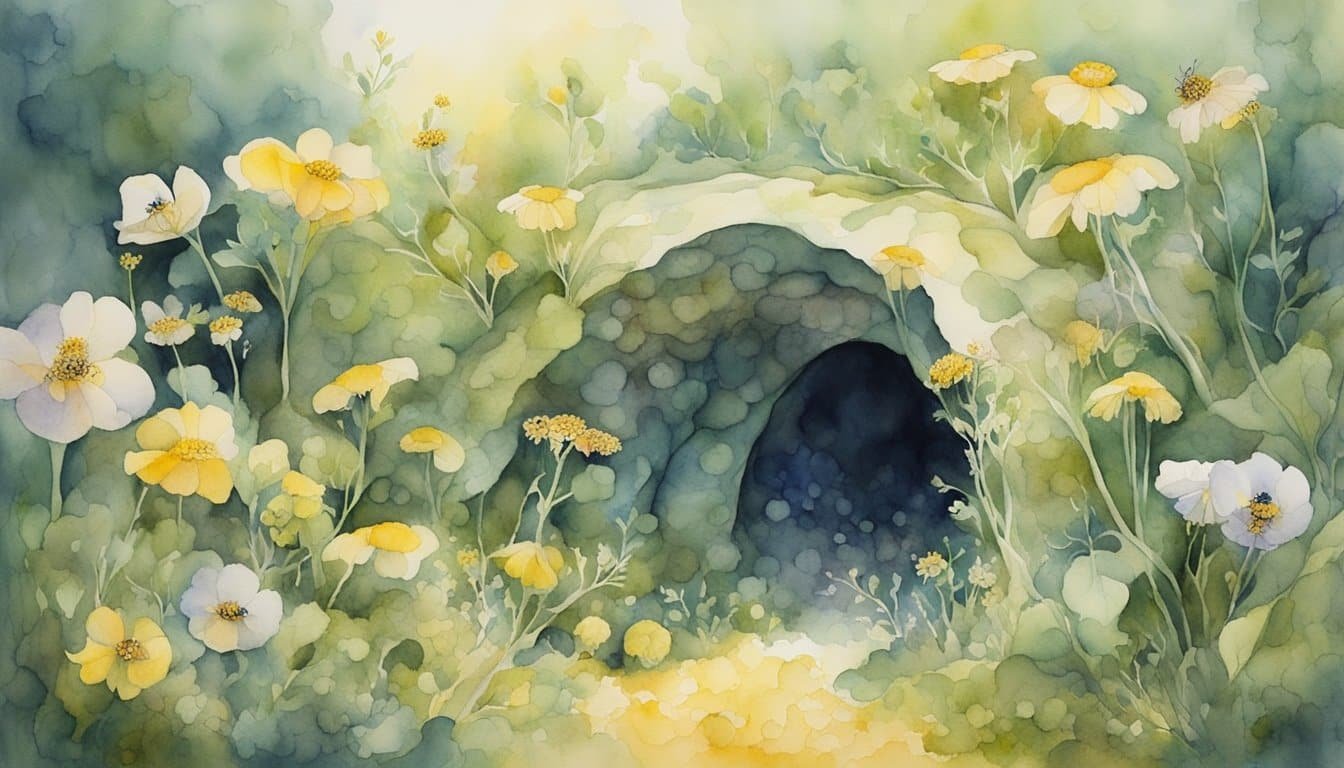Understanding Underground Bees
Underground bees, a term often encompassing a variety of species such as miner bees, mason bees, leafcutter bees, and bumble bees, engage in fascinating nesting behaviors that set them apart from their hive-building cousins. Ground-nesting bees select secluded spots in the soil to form their residences, exhibiting a range of solitary to semi-social behaviors.
Nesting Habits
Ground bee species are known for their solitary nature. Each female typically digs her own nest in the ground, laying eggs in individual cells provisioned with pollen and nectar. Unlike honeybees, solitary bees like the alkaline bee and the Colletes inaequalis are not aggressive and play vital roles in pollination.
- Miner bees: Often spotted excavating nests in dry ground.
- Mason bees: Prefer to nest in pre-existing cavities, sealing their nests with mud.
- Leafcutter bees: Recognized for their unique behavior of cutting leaves to line nest cells.
Digger bees, especially, have been observed having a preference for nest sites further from human settlements, indicating the impact of human disturbance on their nesting choices. Specifically, Andrena camellia Wu, a digger bee, has shown variation in nest density based on proximity to urban areas.
North American Diversity
In North America alone, the diversity of ground-nesting bees is remarkable. From the bustling bumble bee that sometimes chooses underground abodes to the industrious carpenter bees that burrow into wood rather than soil, these creatures adapt to an array of environments.
Mining bees are another group that lives up to their name, with many species burrowing into the ground to create complex subsurface nests. The curious habits and diversity of underground nesters make them compelling subjects for both research and observation.
Ironic as it may be, their underground lifestyle makes them less noticed by the public, yet their role in ecosystems is monumental, showcasing just how much goes unseen in the natural world.
Biology and Lifestyle

Exploring the world of solitary bees reveals a fascinating journey through their unique biology and way of life, which greatly differ from their more familiar honeybee cousins.
Reproduction and Development
Solitary bees mate shortly after emergence in spring, with females carrying the future generation. Eggs are laid in secure underground burrows, ensuring a safe start for the next generation of these vital pollinators.
Nesting Habits and Habitat
These insects prefer to nest in soils ranging from sandy lawns to clay-heavy earth. Females meticulously dig tunnels and chambers, sometimes creating mounds reminiscent of tiny volcanos in the soil.
Diet and Pollination
Feasting primarily on nectar and pollen, solitary bees are key in pollinating flowering plants. Unlike honeybees, they’re not making honey, but they are incredibly efficient at transferring pollen between blooms.
Physical Characteristics
Solitary bees display a range of colors, from metallic green to the iconic black and yellow stripes. Their wings allow them to navigate the air with precision, while their abdomen houses the stingers they rarely use.
Social Structure
These bees live up to their name, preferring a solitary life over the bustling colonies of honeybees or the aggressive yellow jackets. Each female acts as her own queen, making decisions for her offspring.
Interaction With Other Species
In their ecosystem, solitary bees interact with a variety of species, from the flowers they pollinate to predatory wasps. Despite their importance, they remain mostly docile and harmless to humans and wildlife alike.
Environmental Impact
The labor of these bees contributes significantly to ecosystems, aiding in the growth of wild and cultivated plants. Their underground tunnels can also aerate the soil, benefiting other plant and animal life.
Human Interaction
While often unnoticed, these pollinators can be affected by human activity such as pesticide use and habitat destruction. However, their presence in gardens is generally considered beneficial, and they’re seen as a gardener’s friend for their pollinating prowess.

